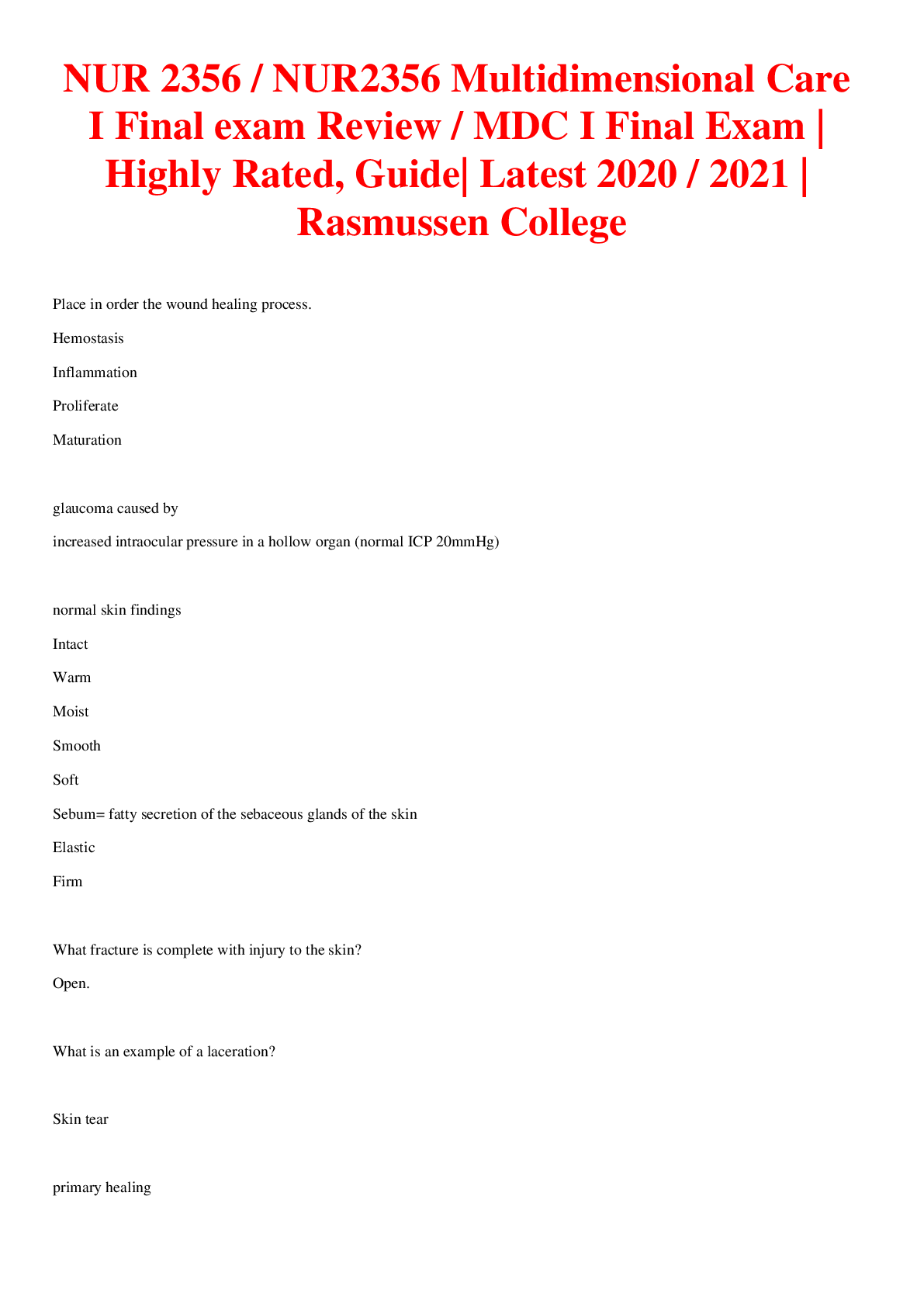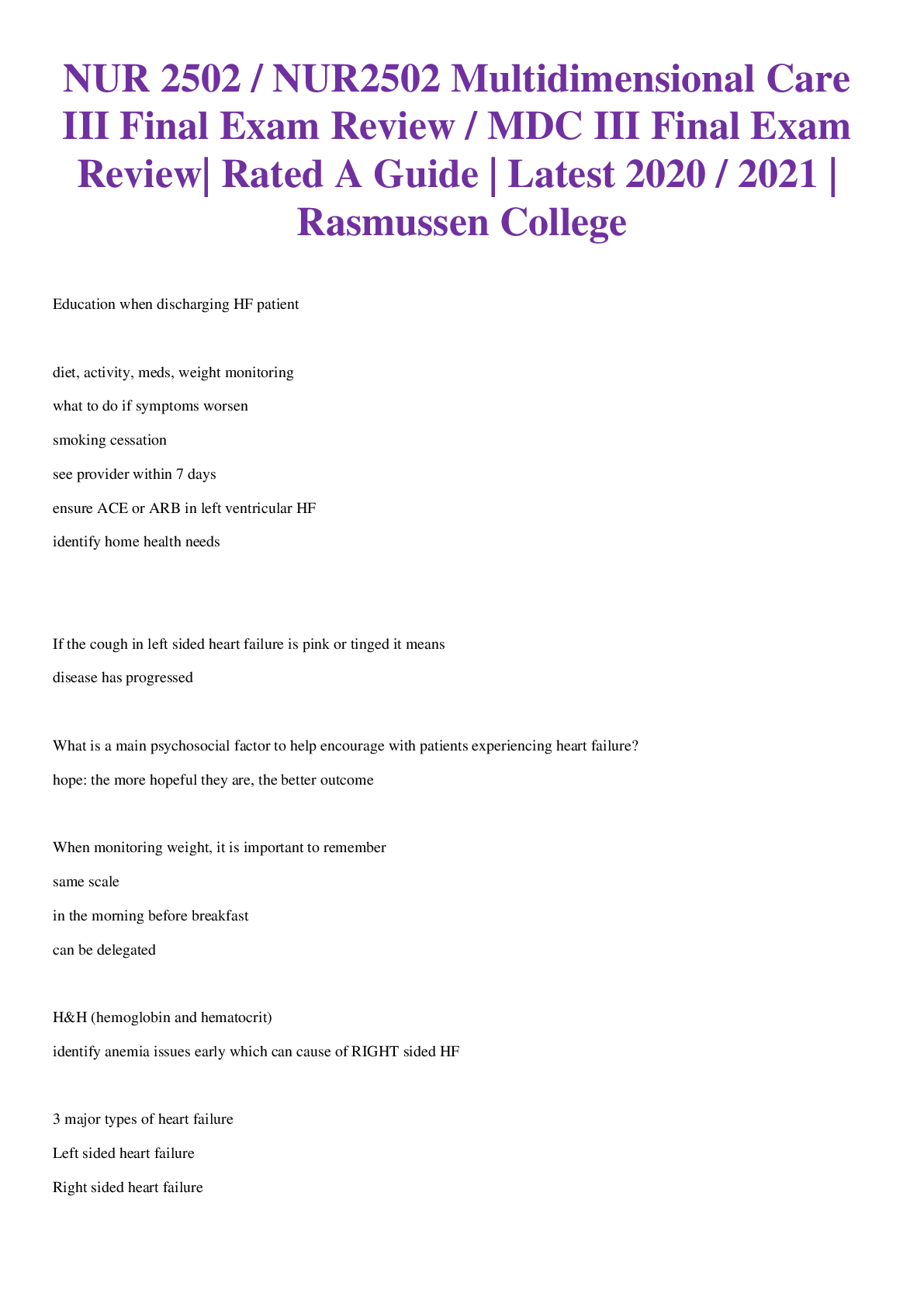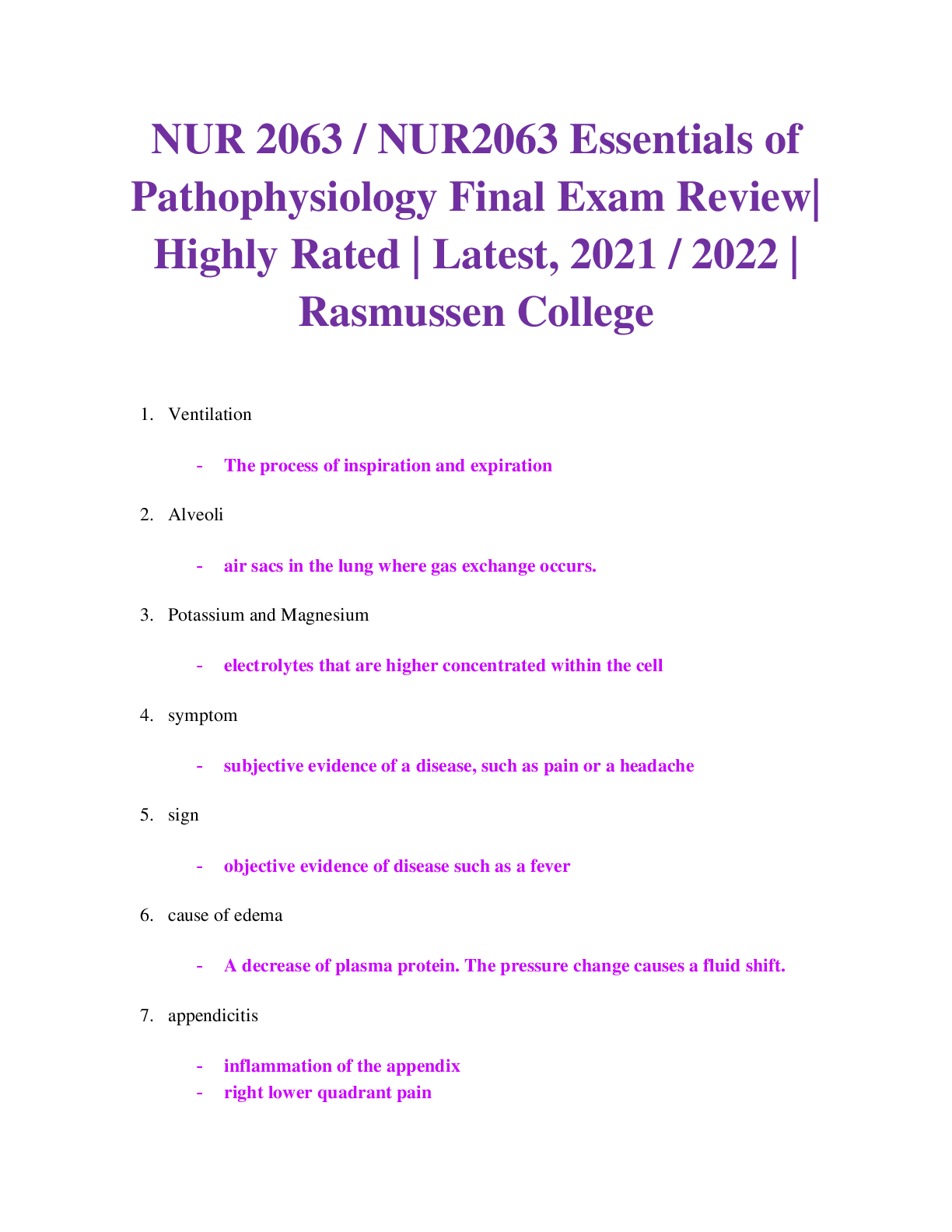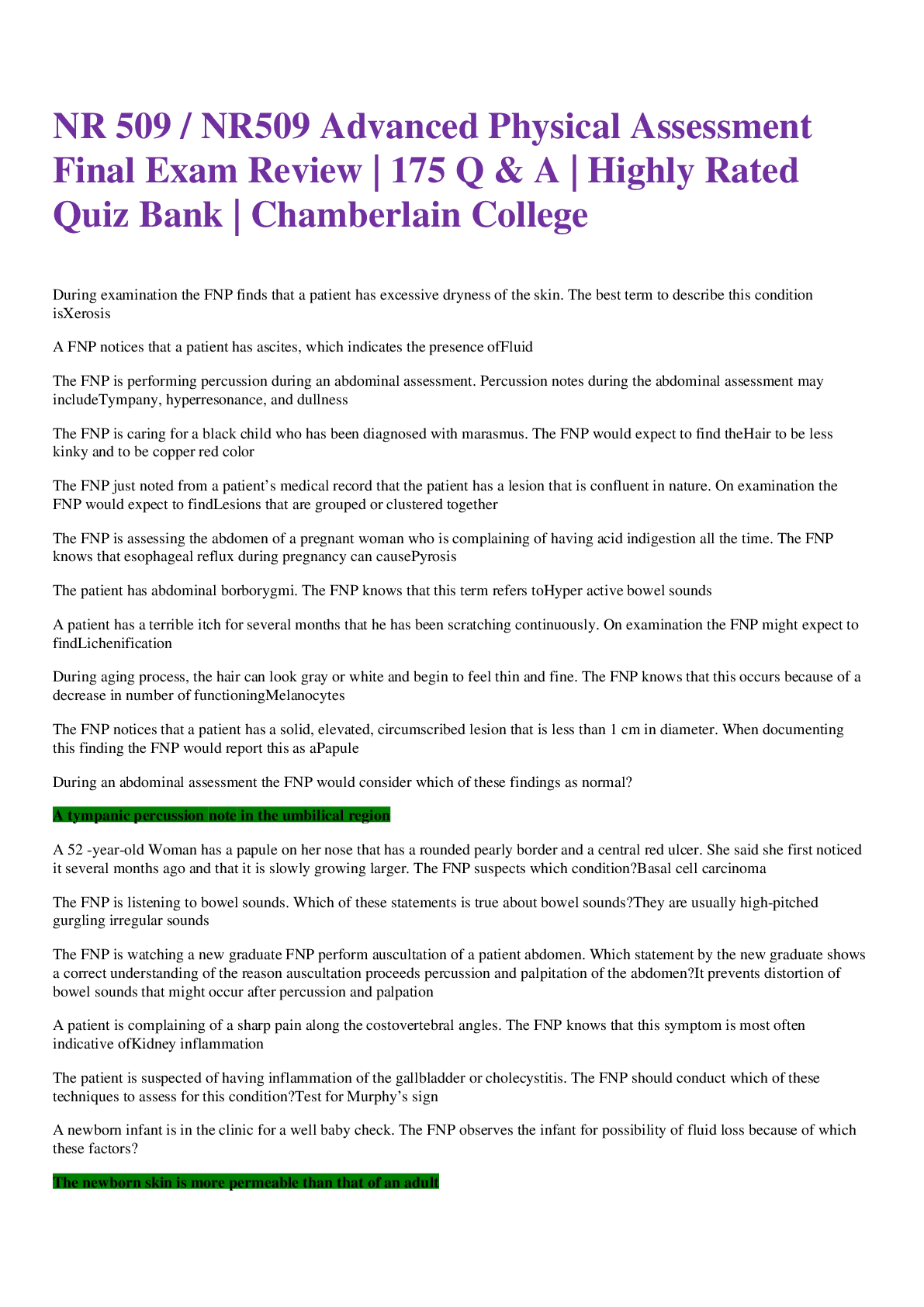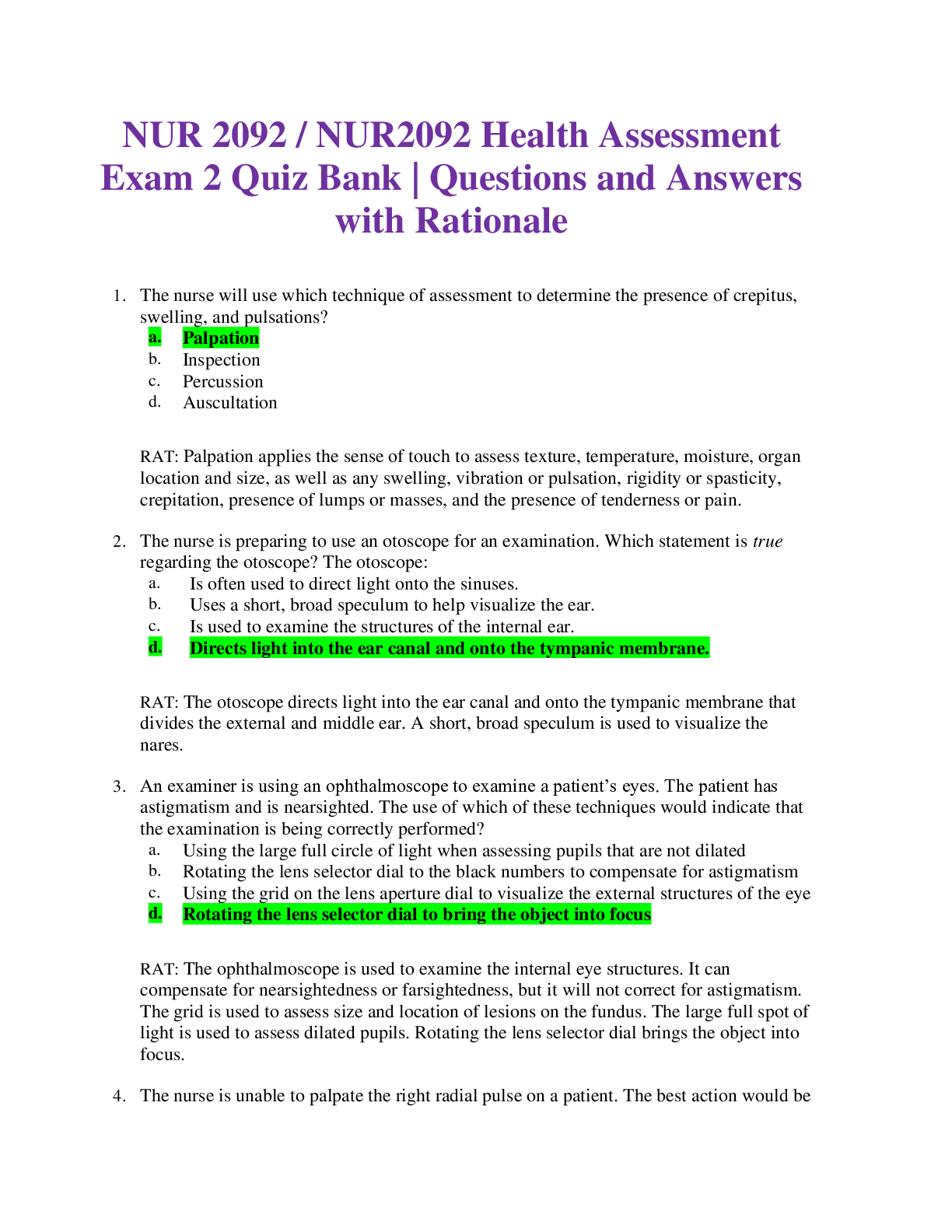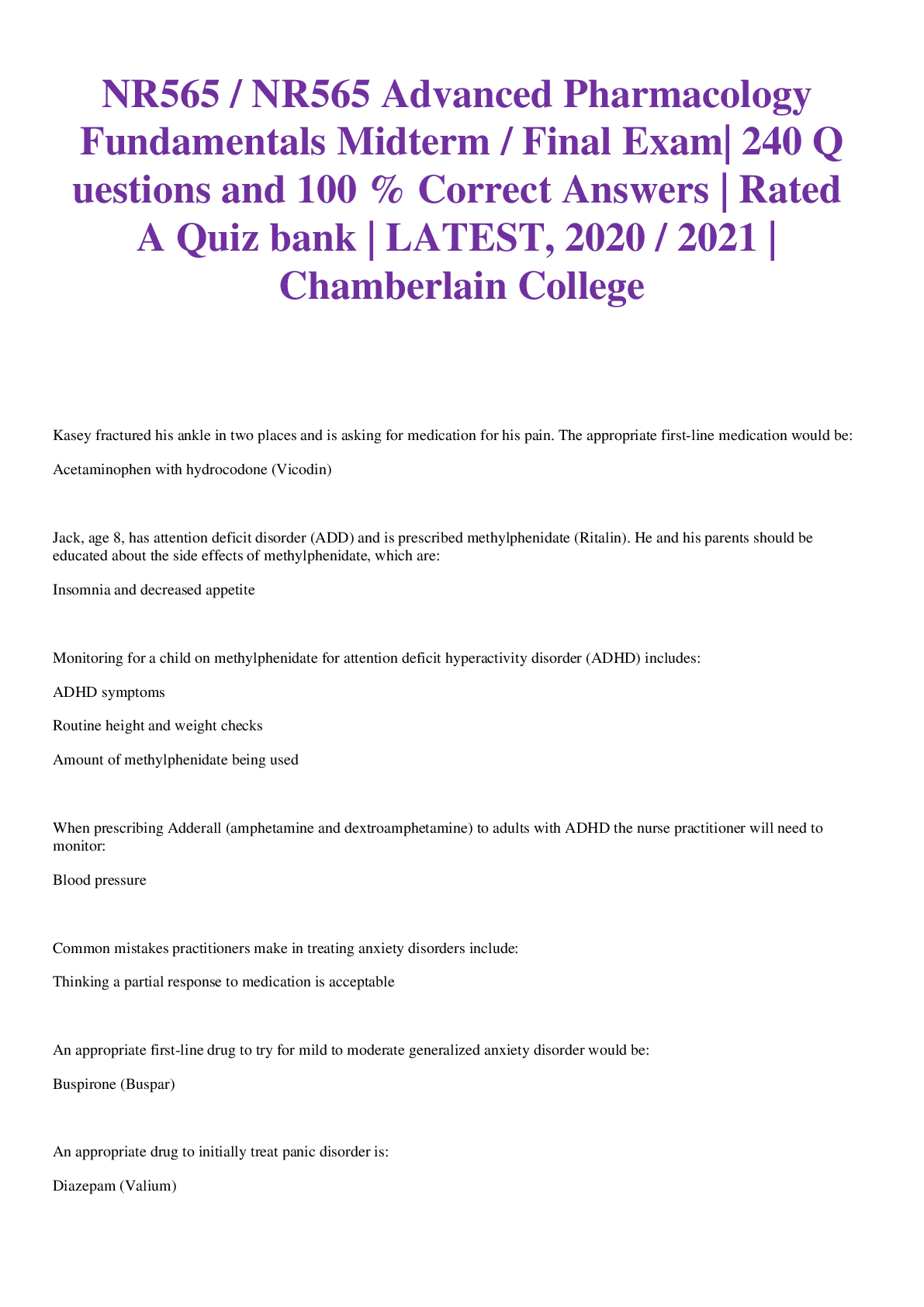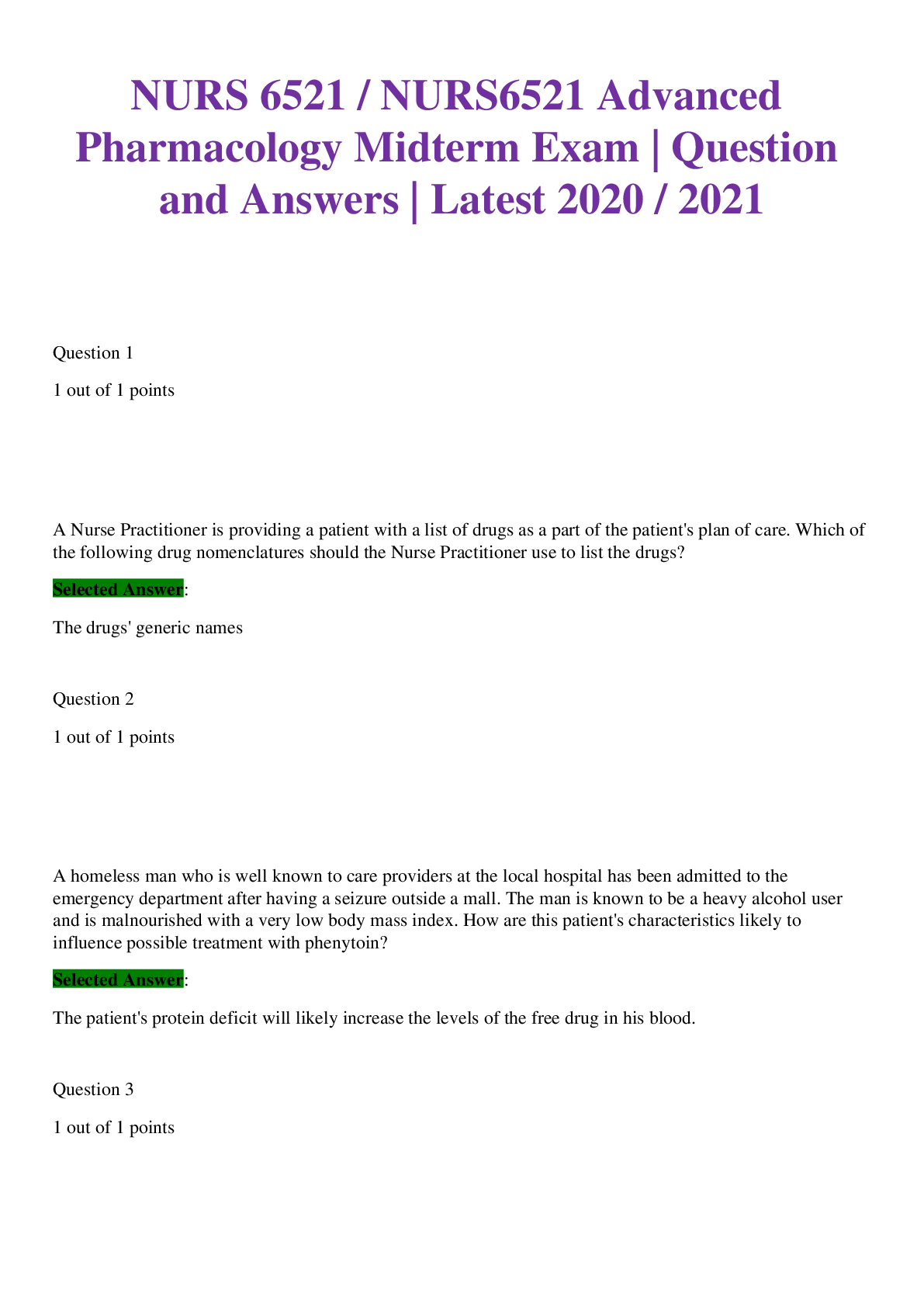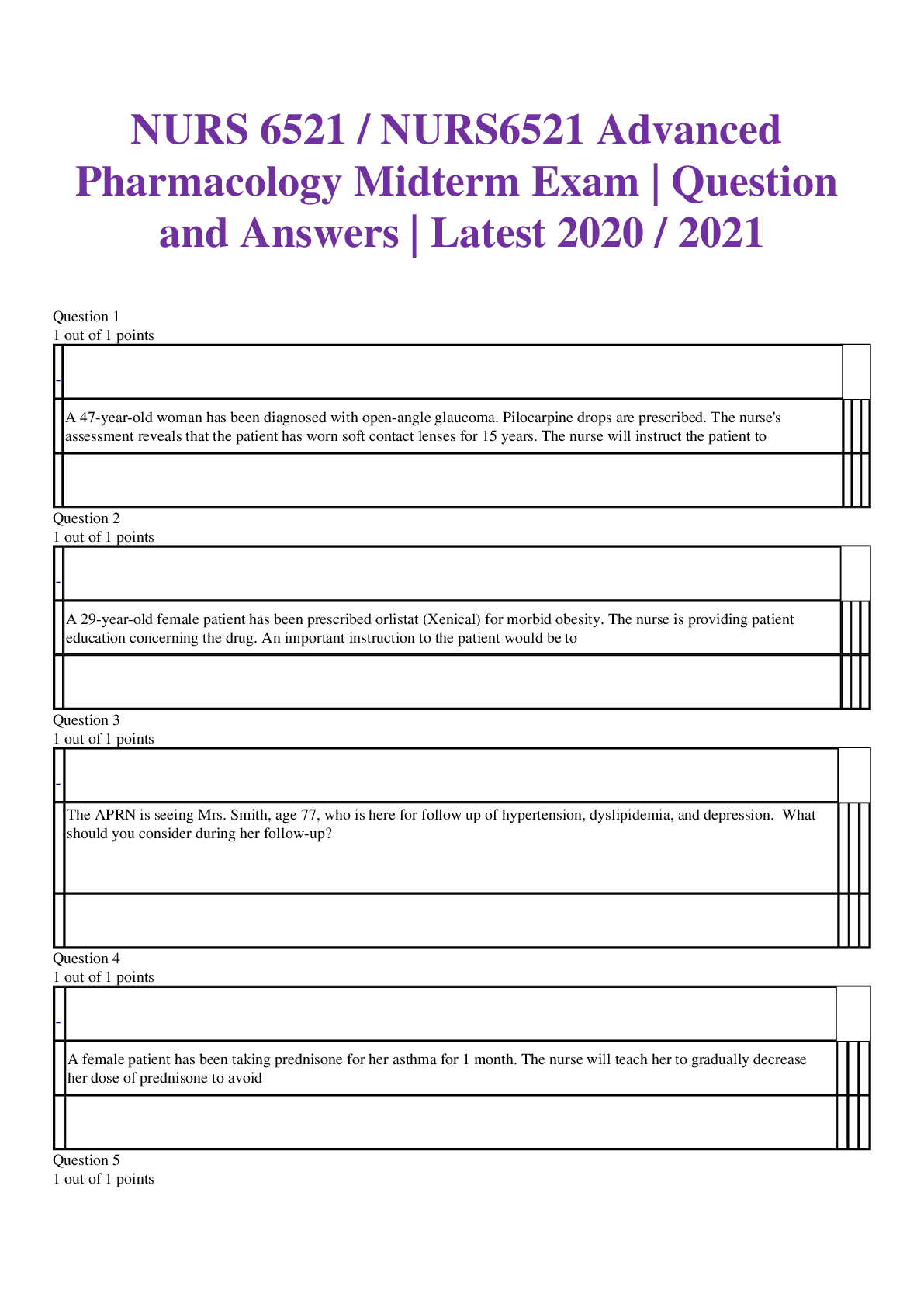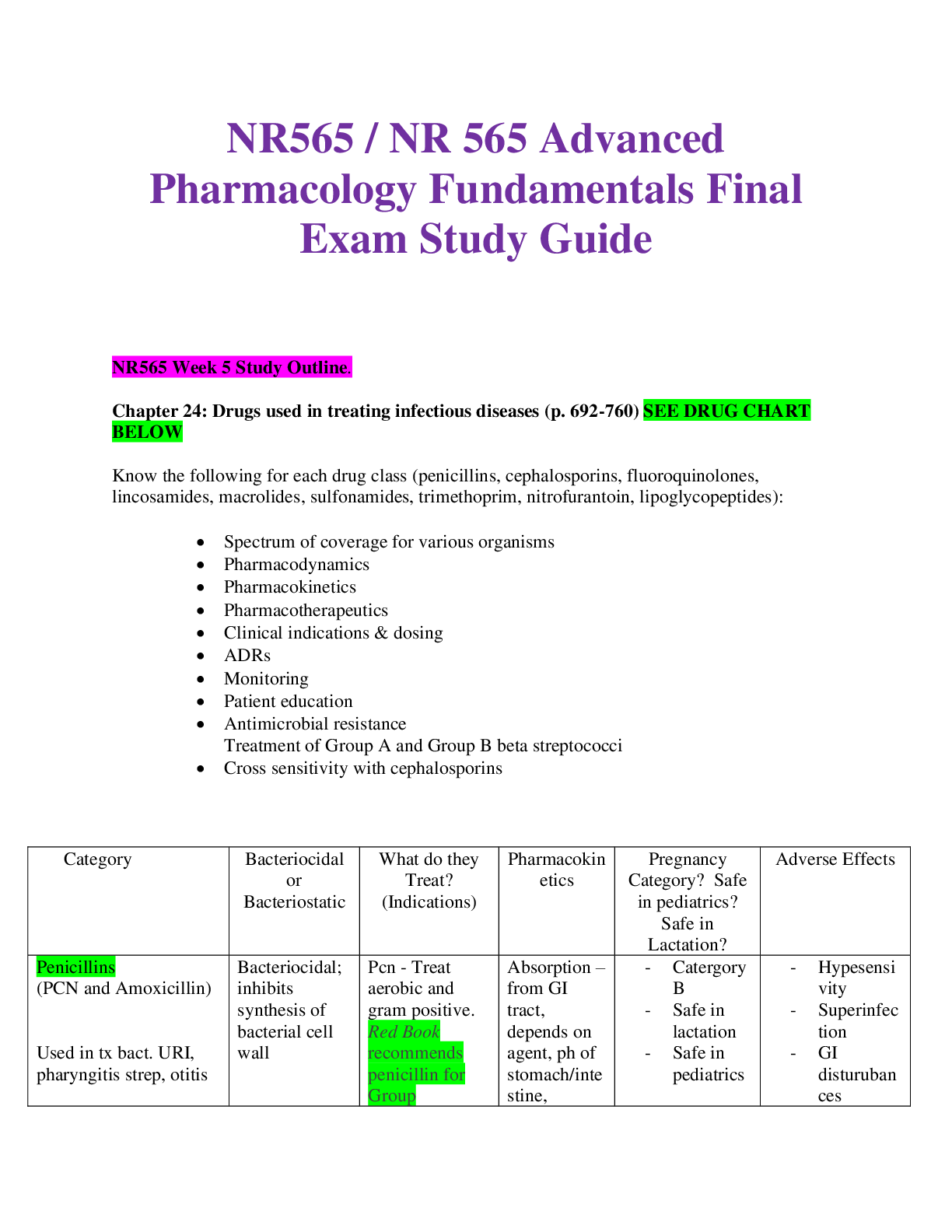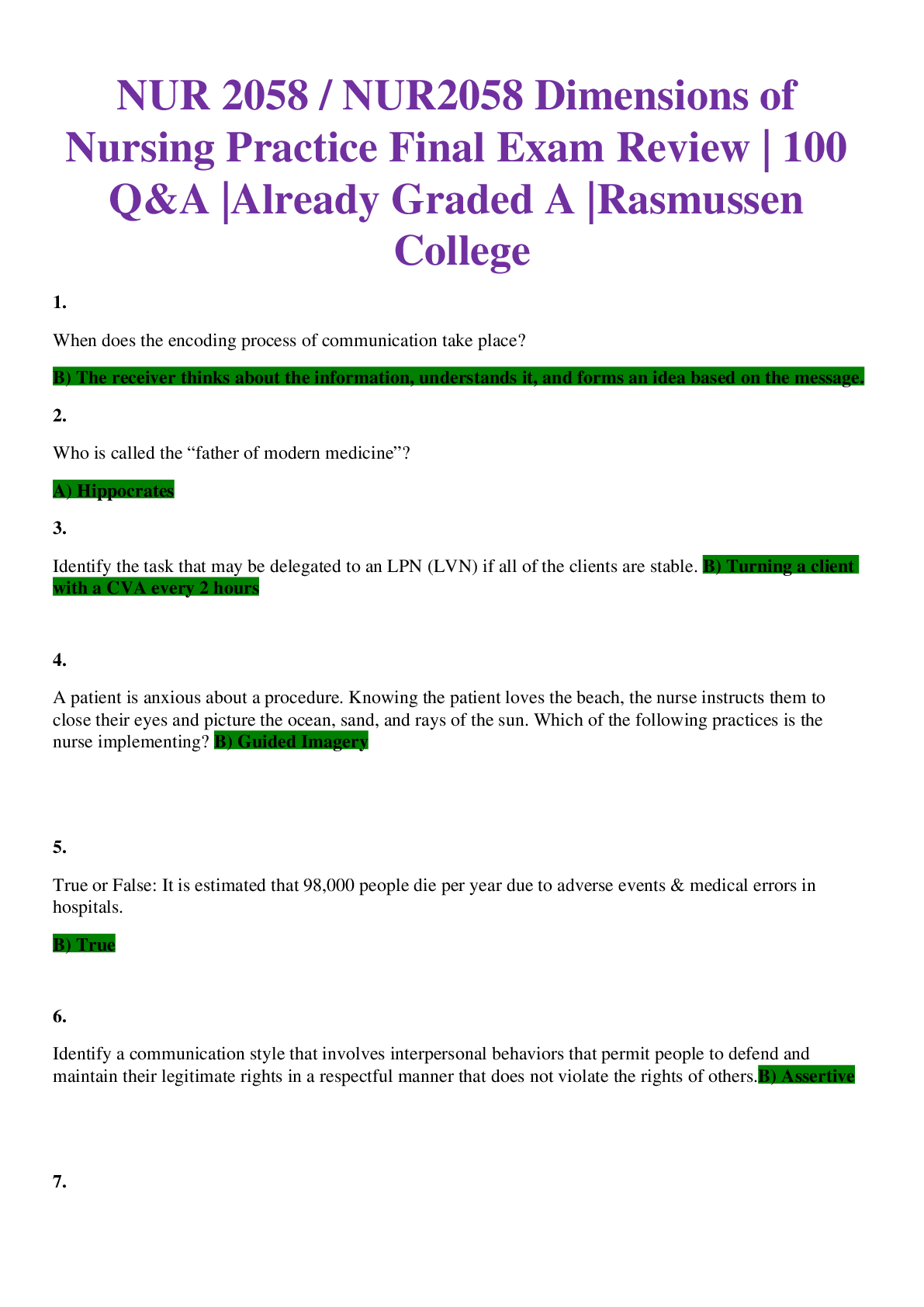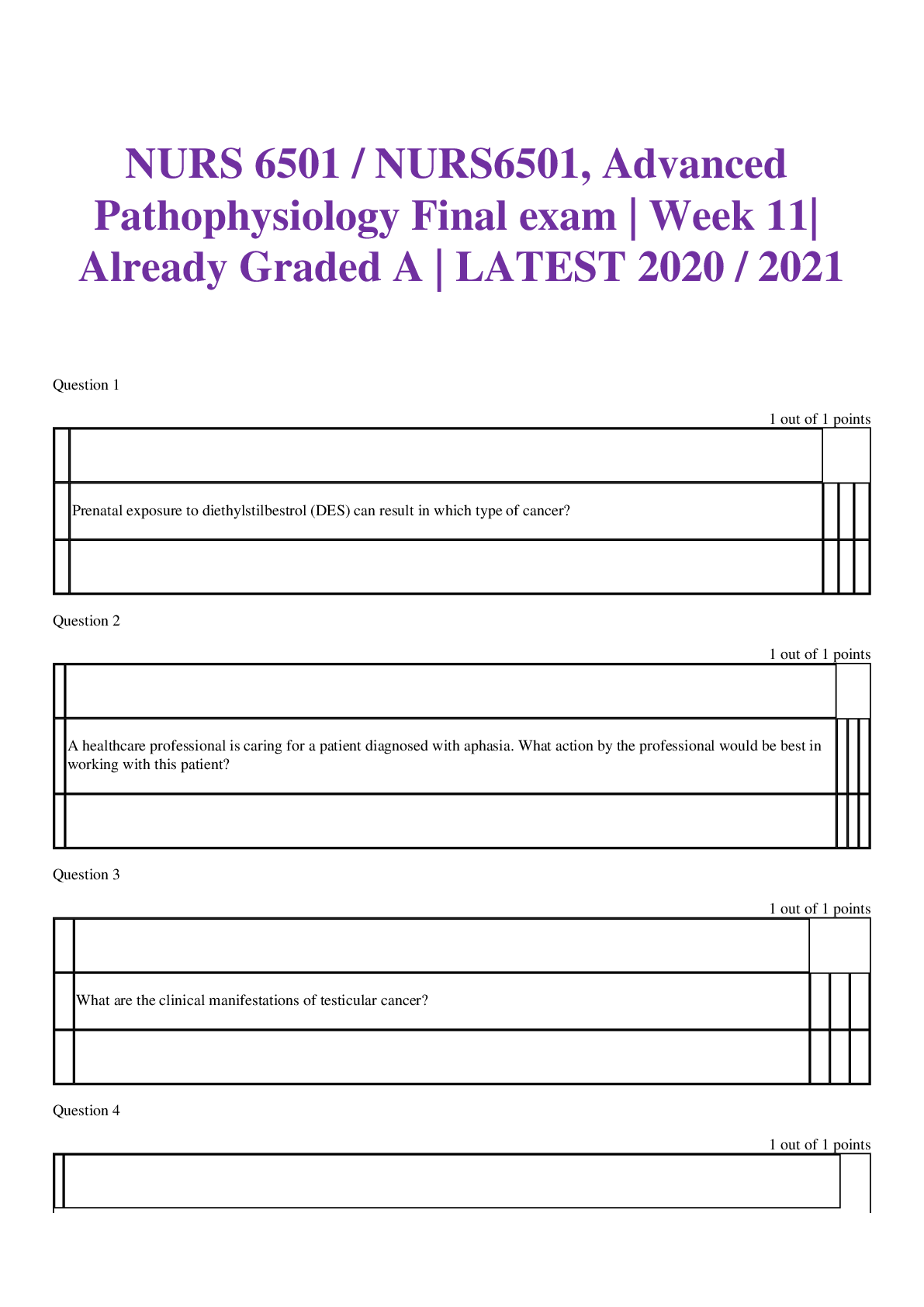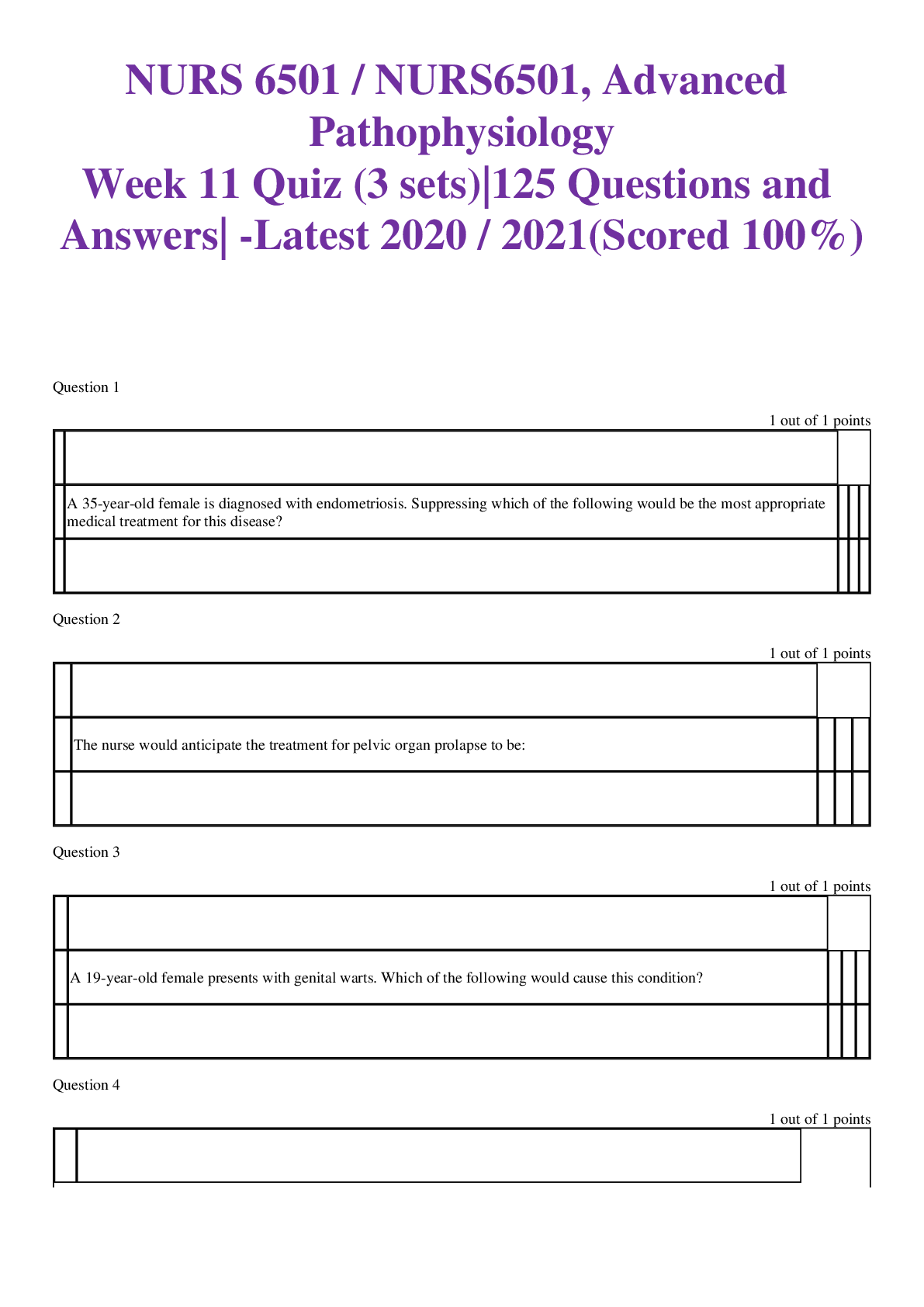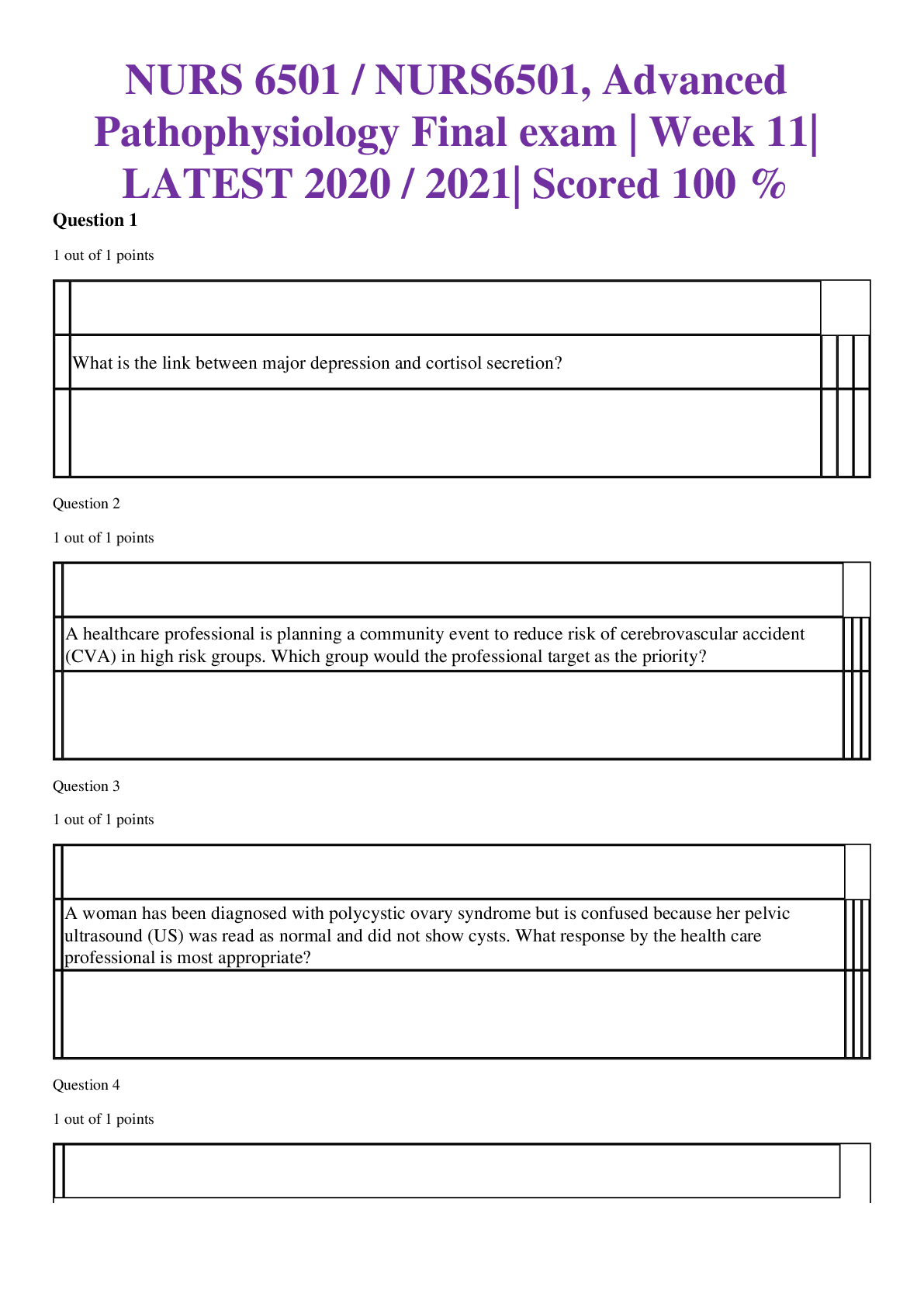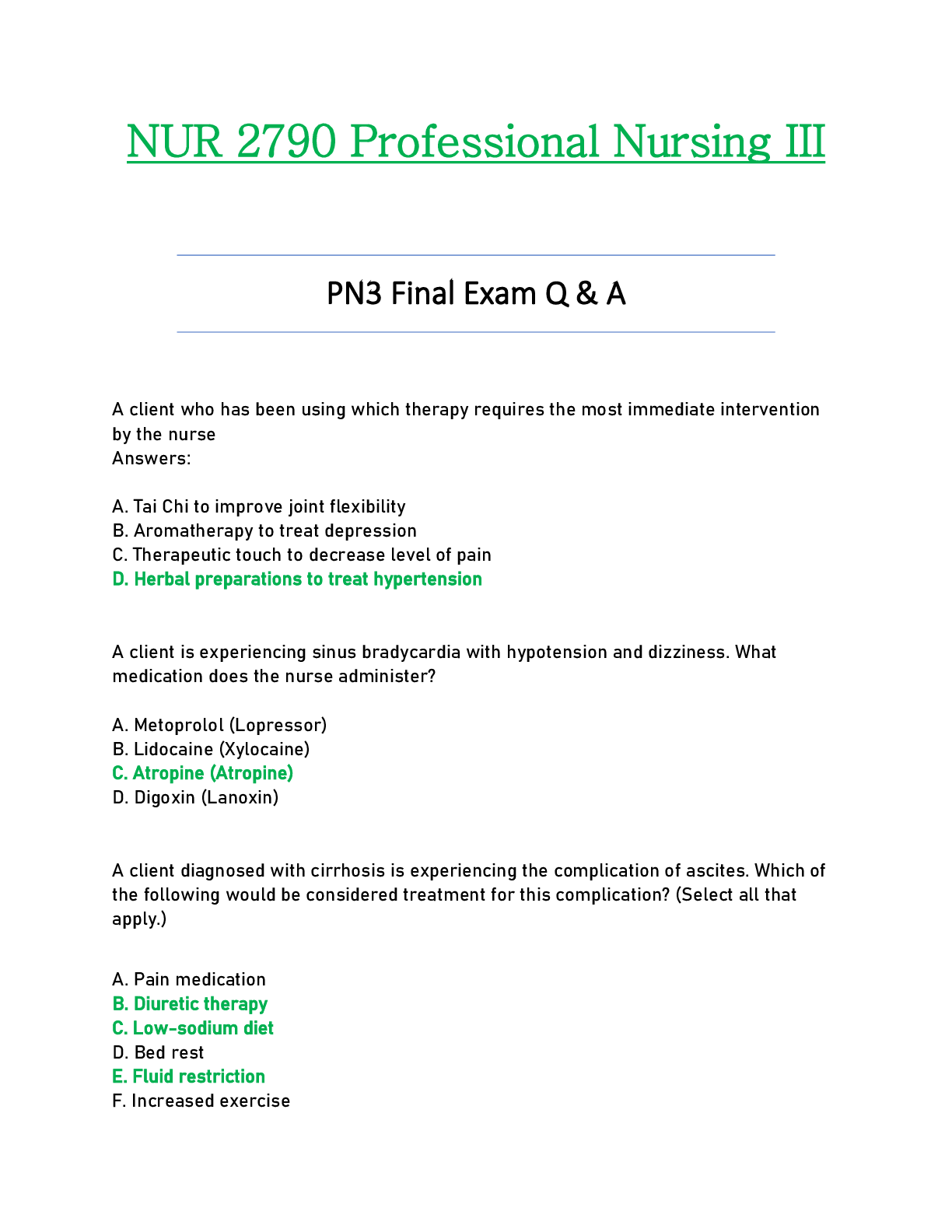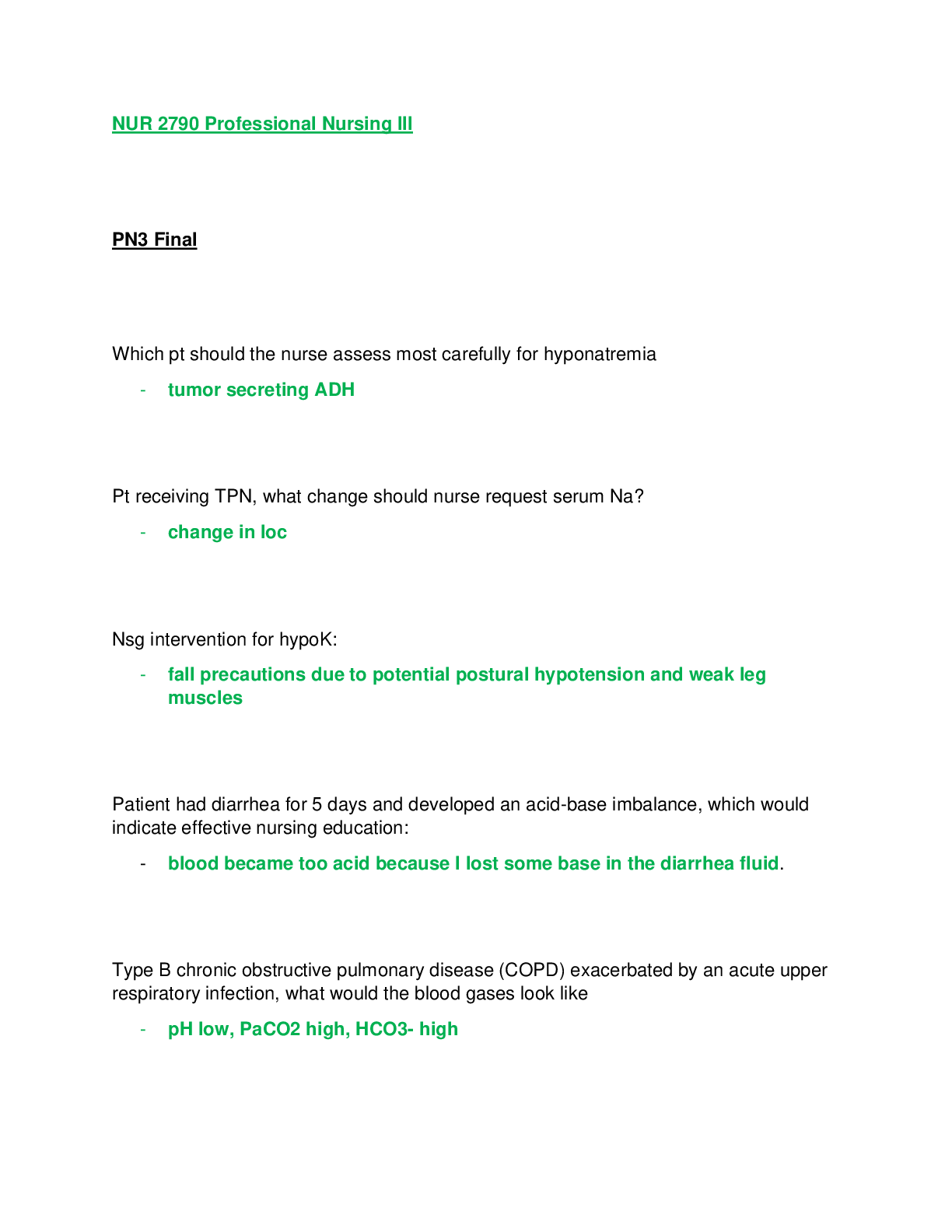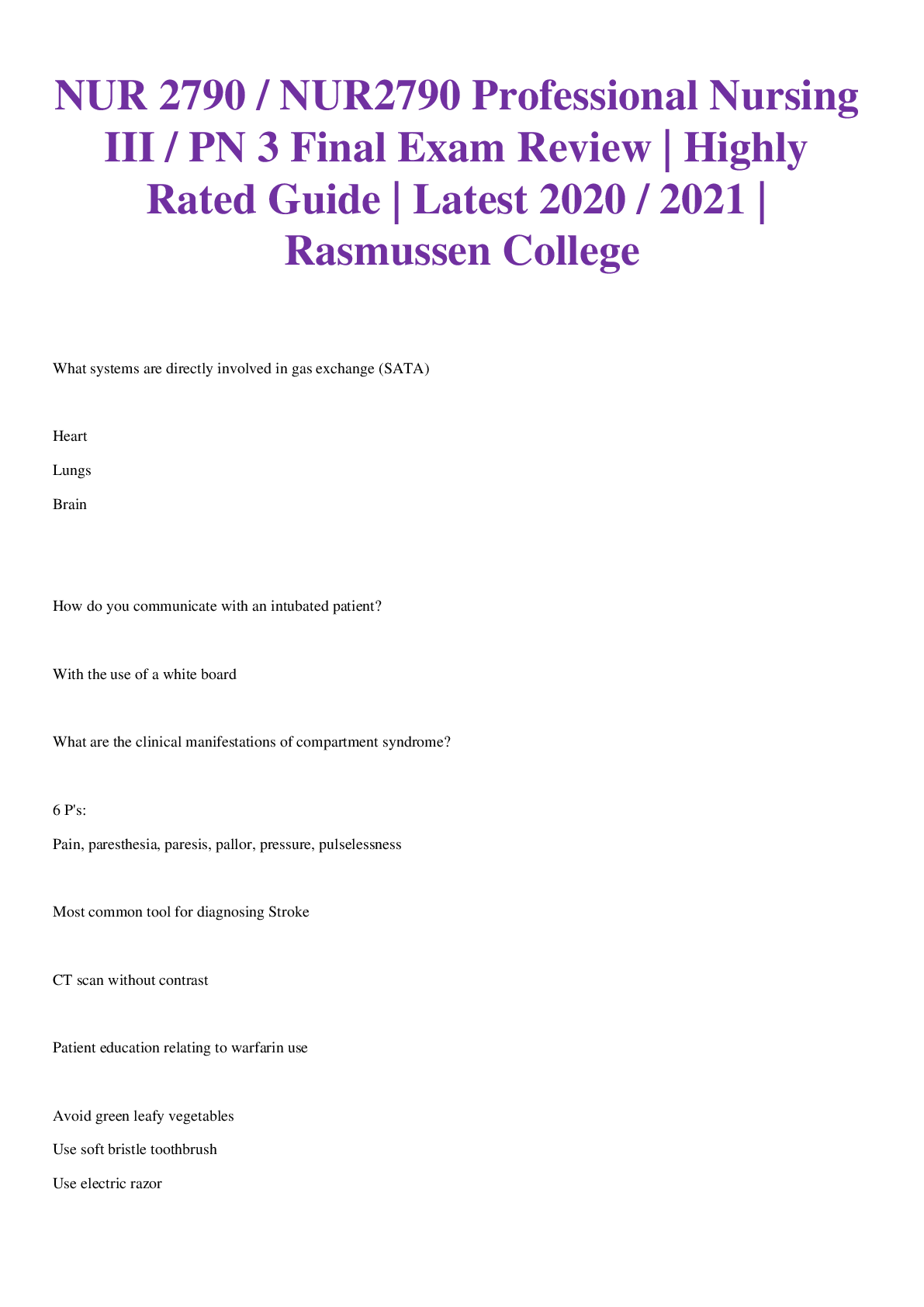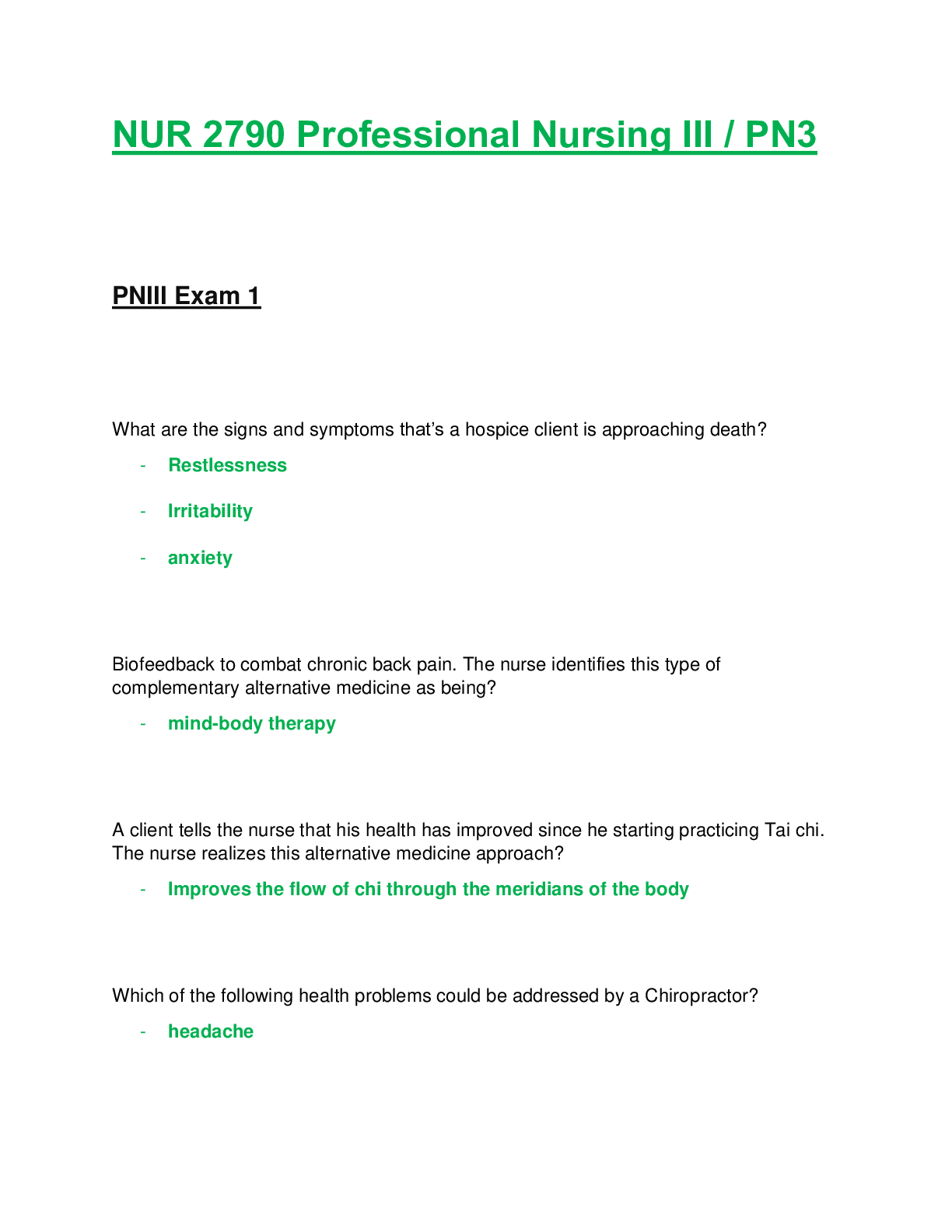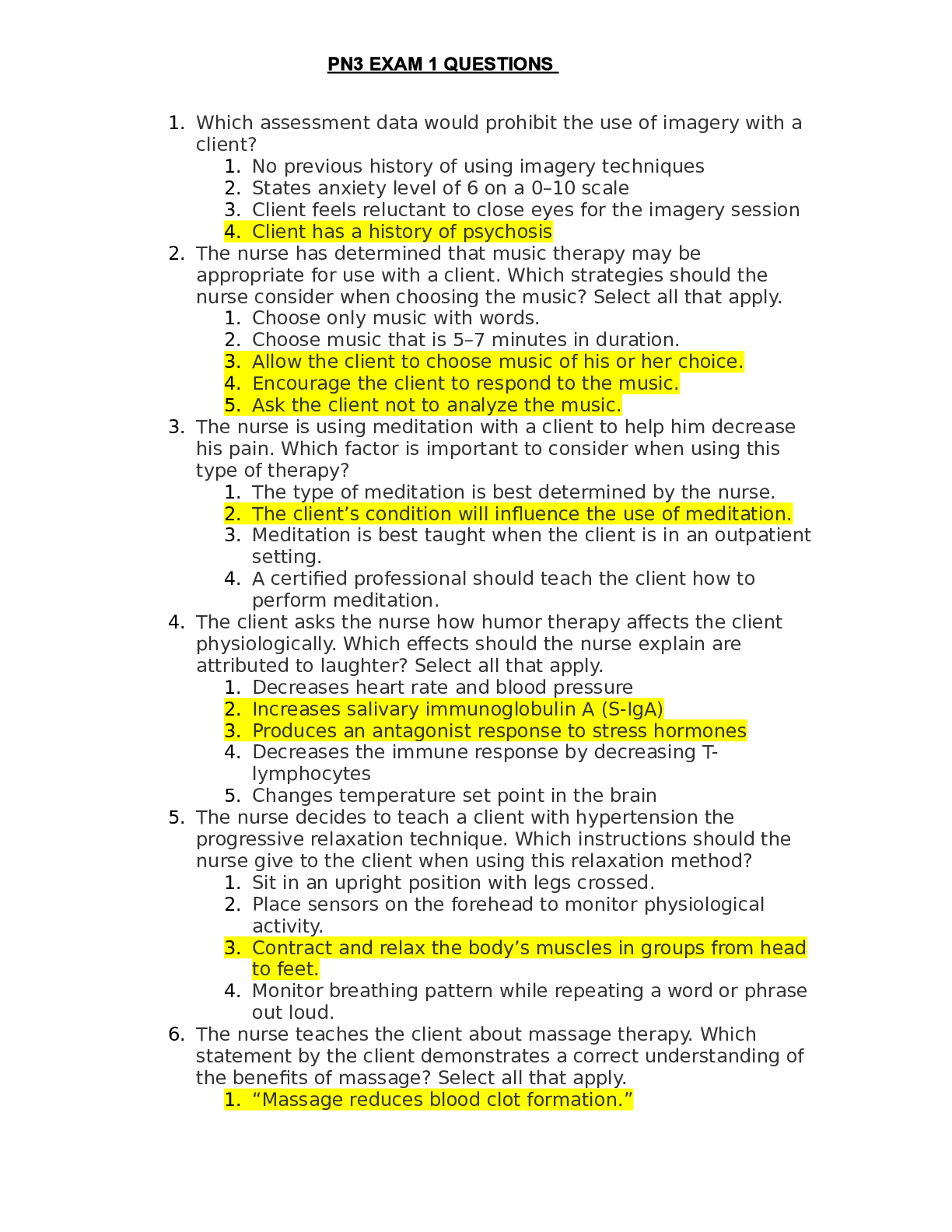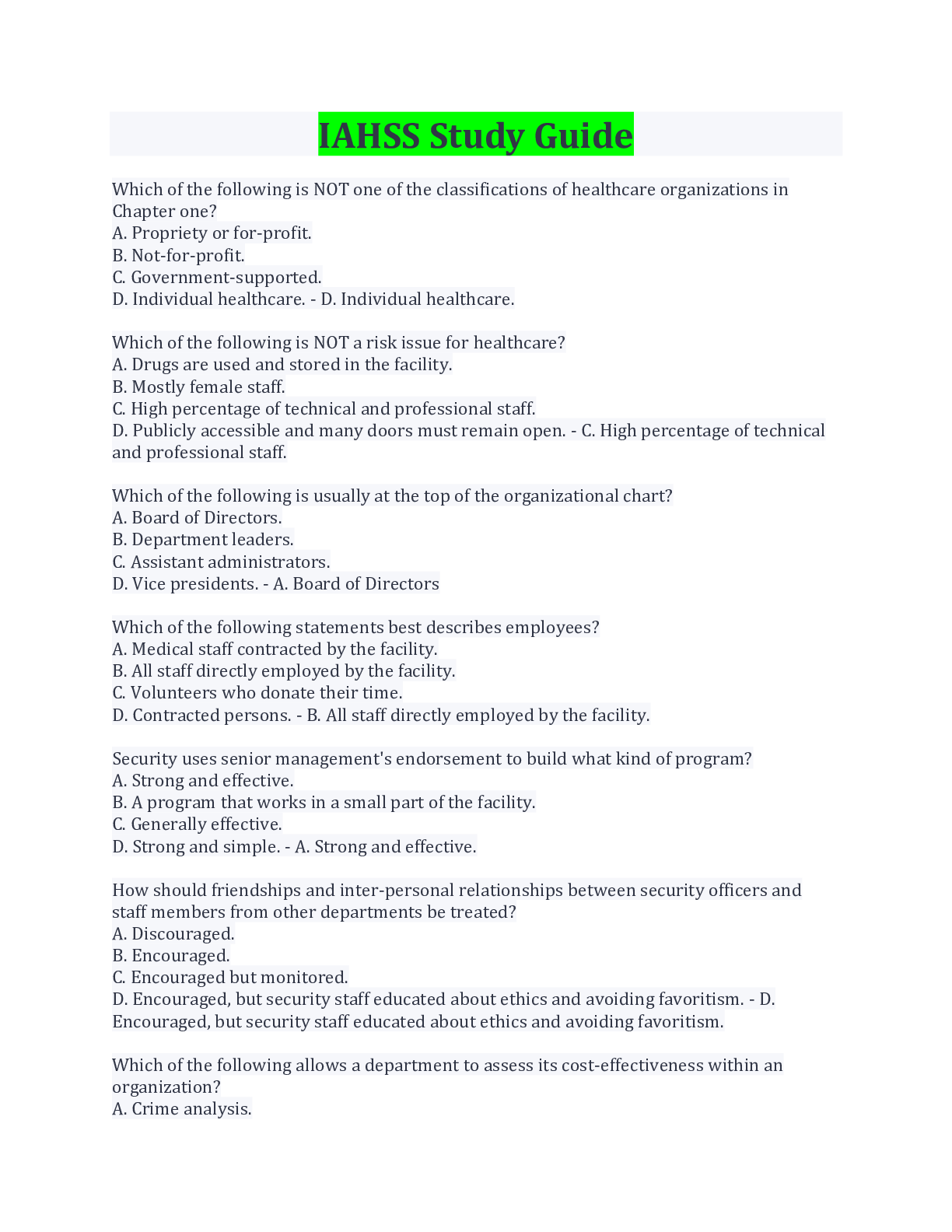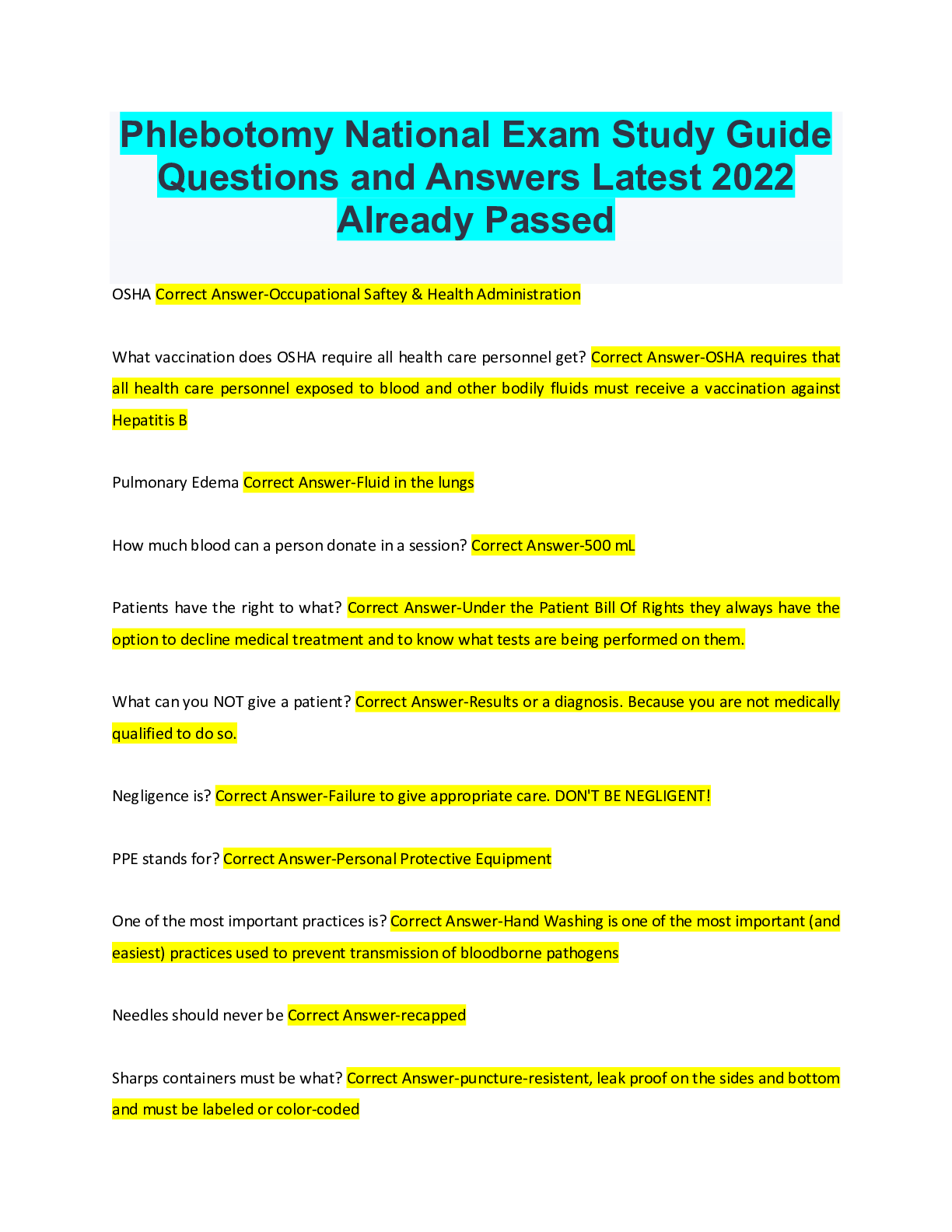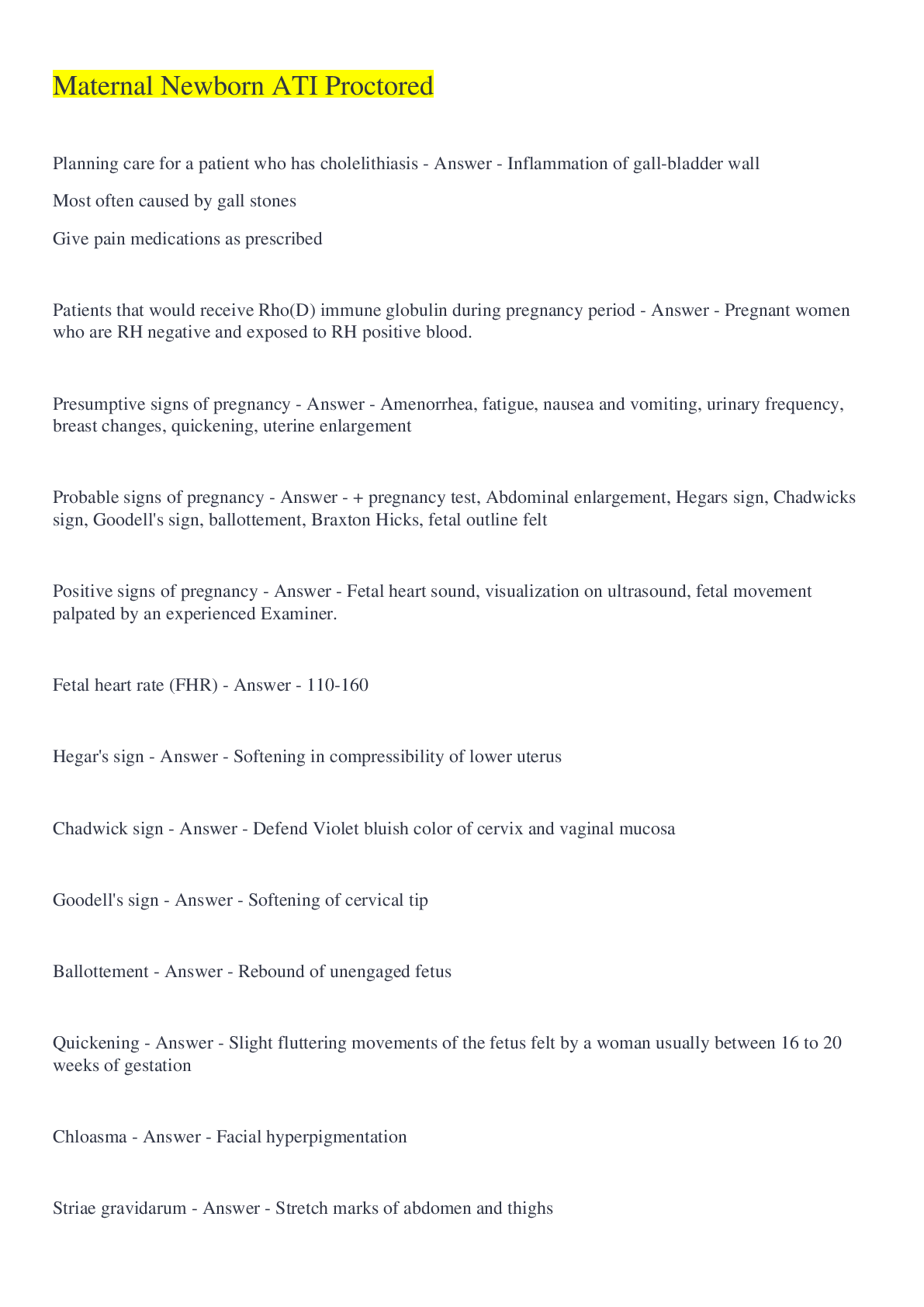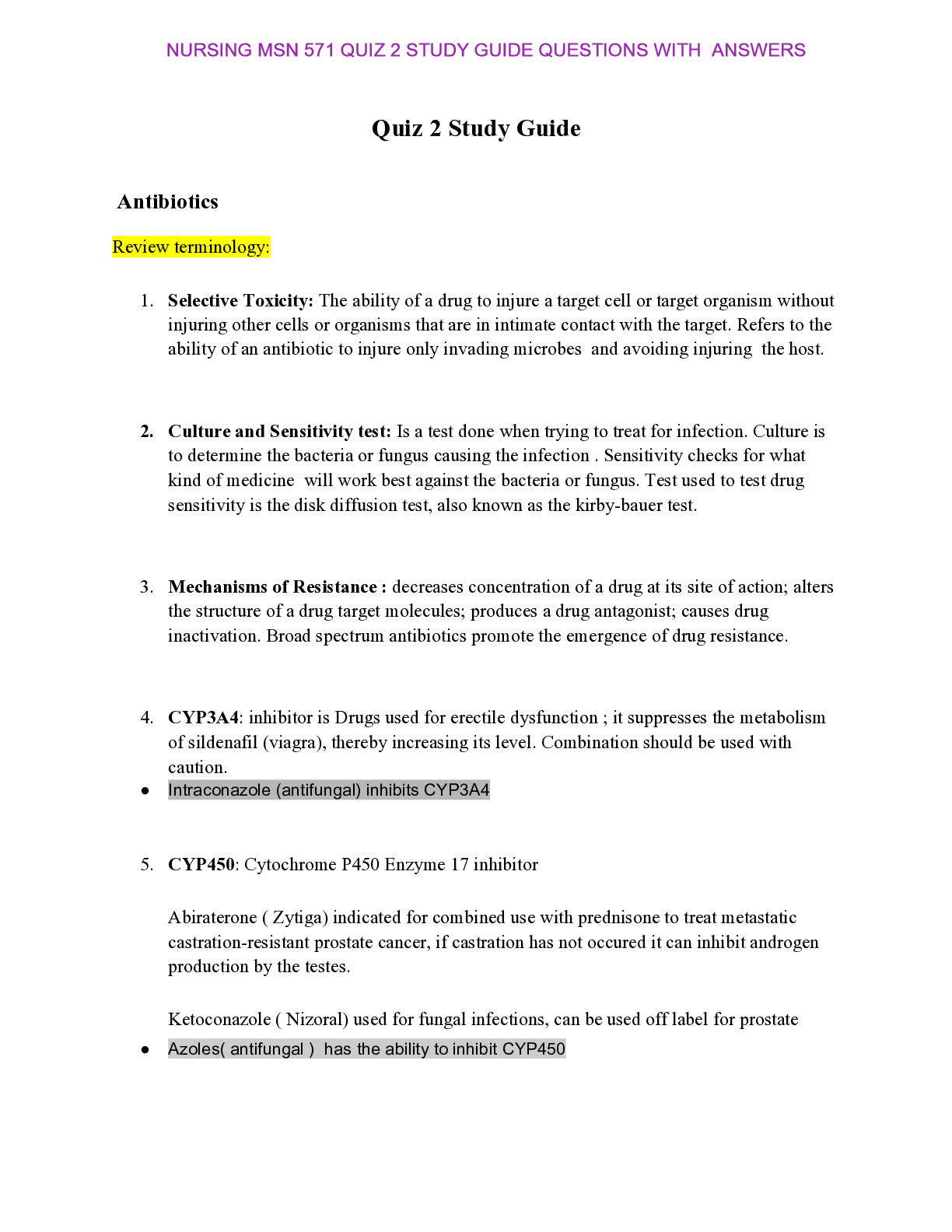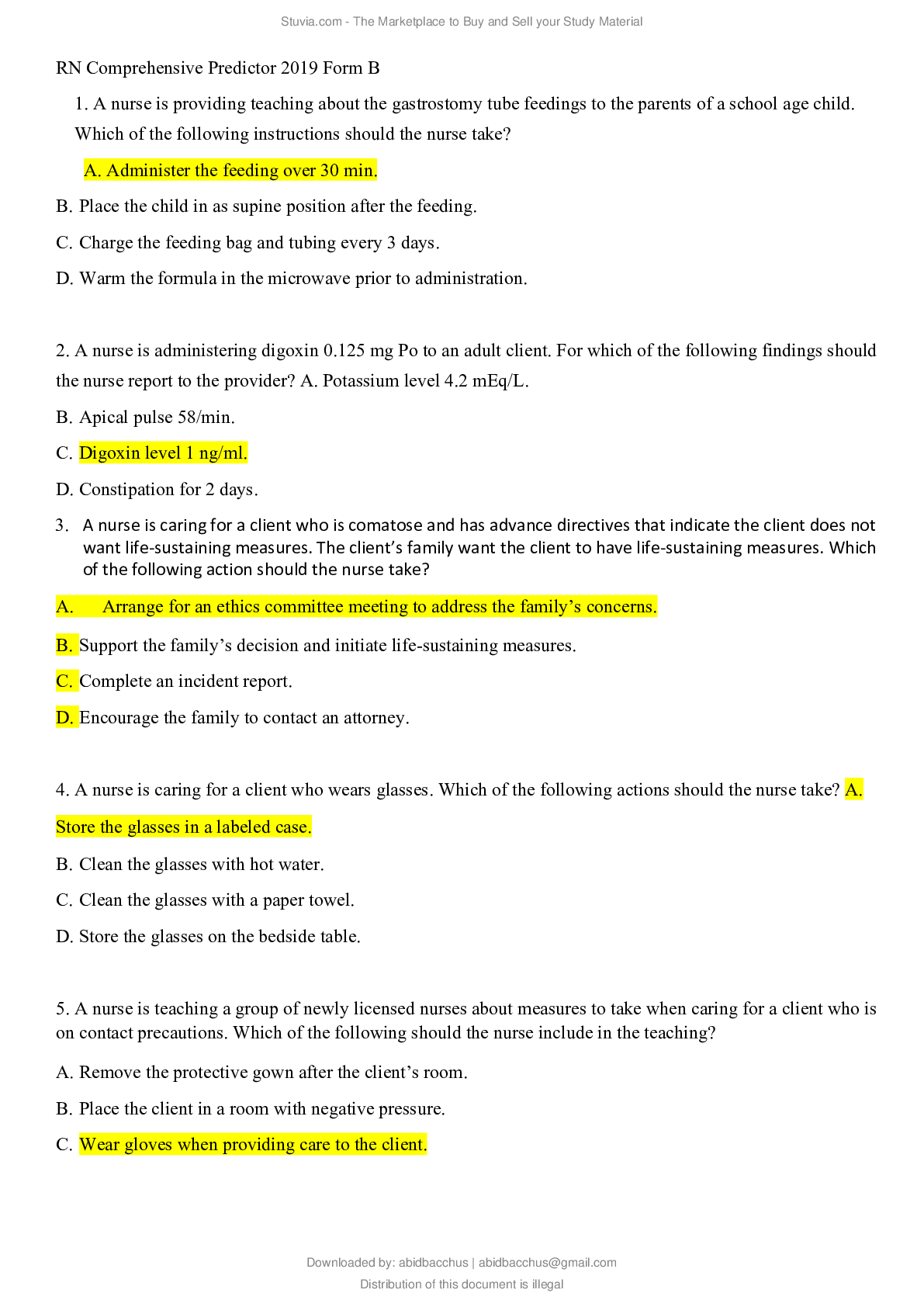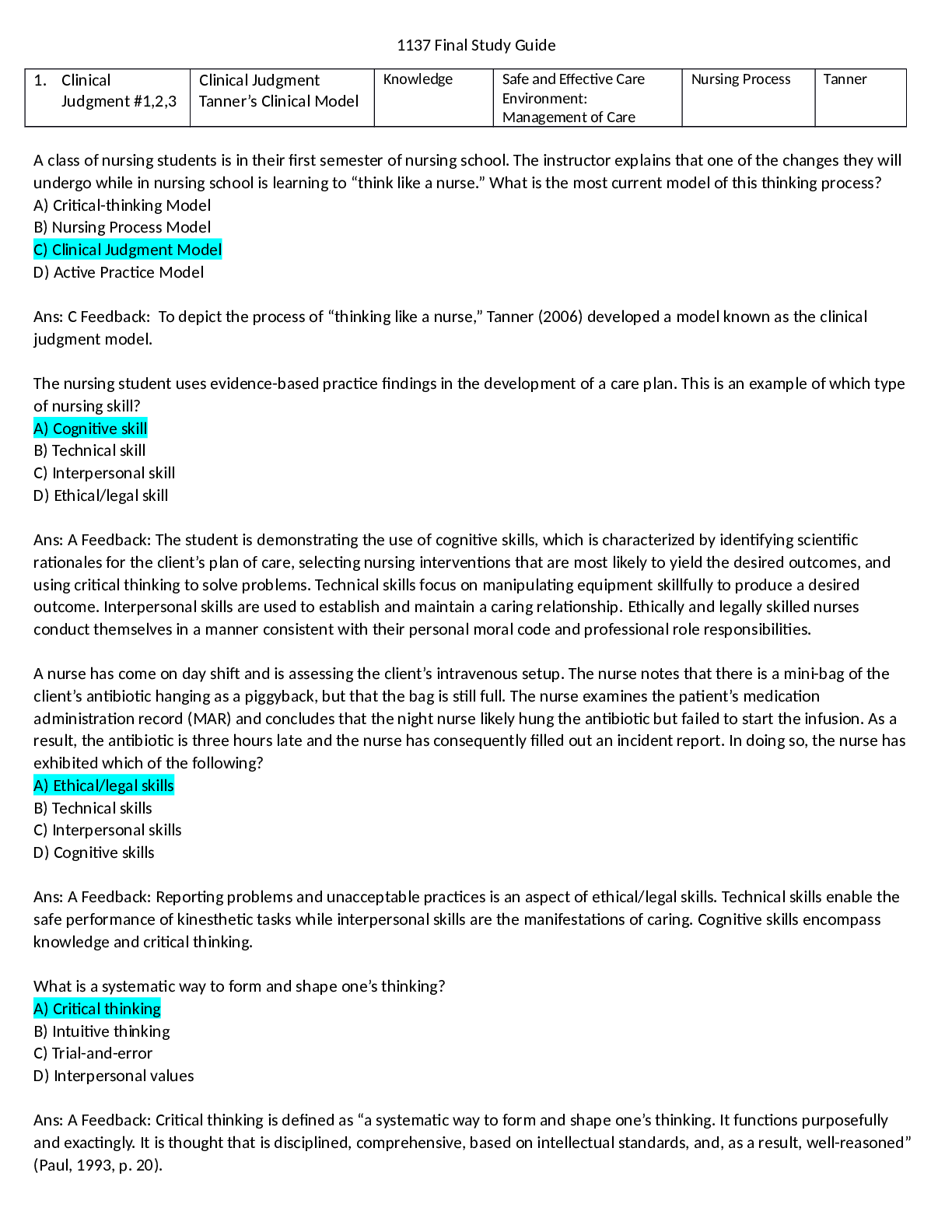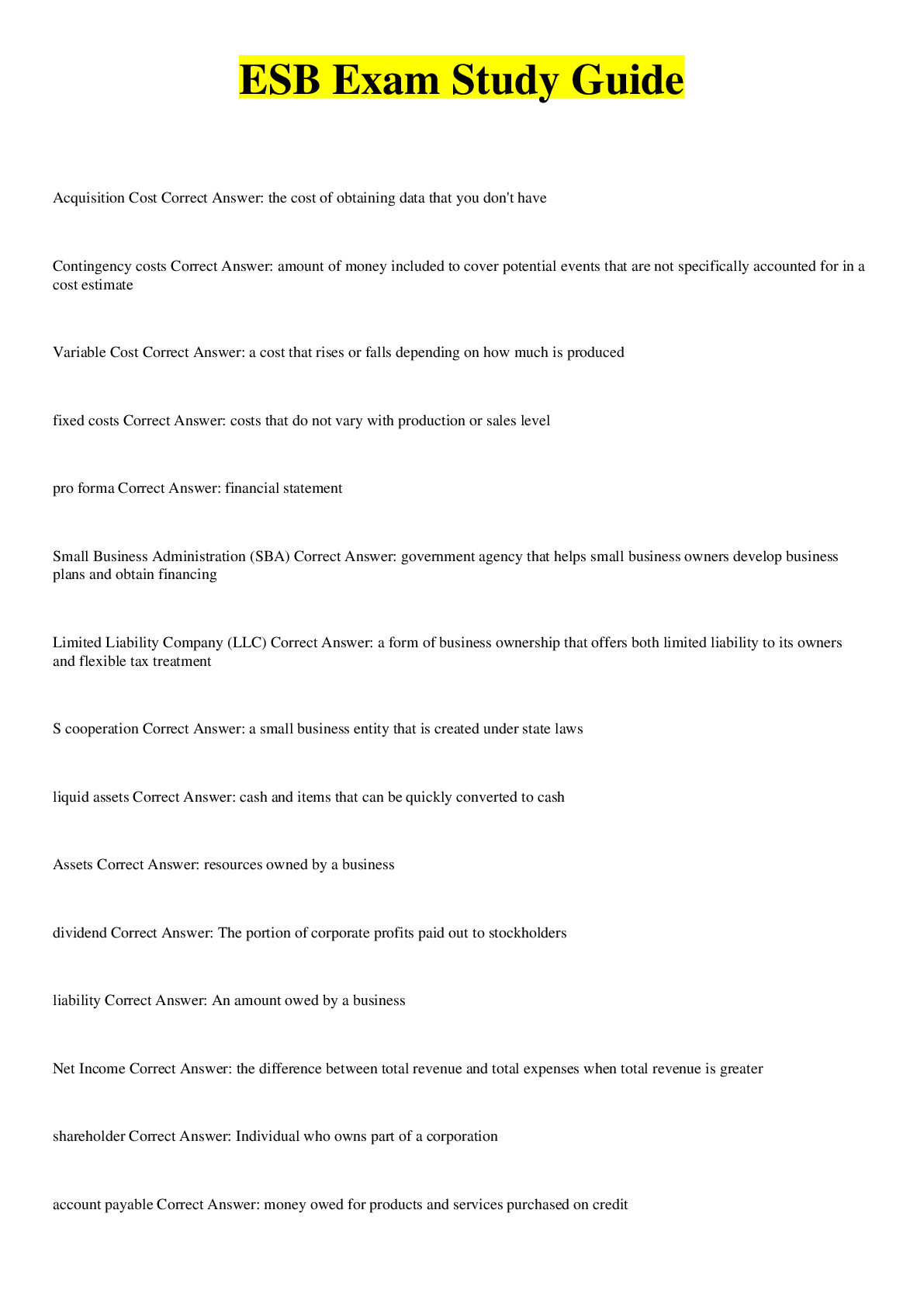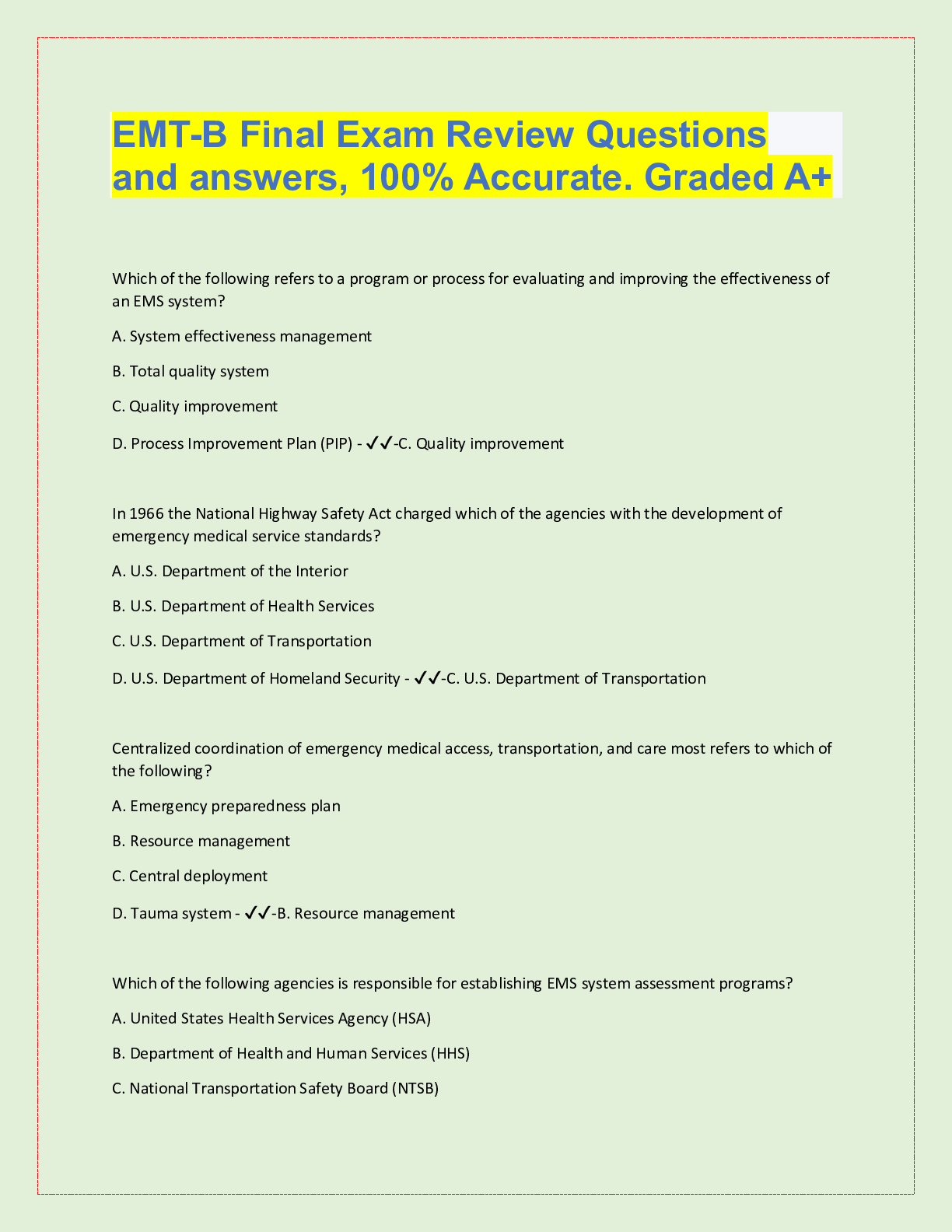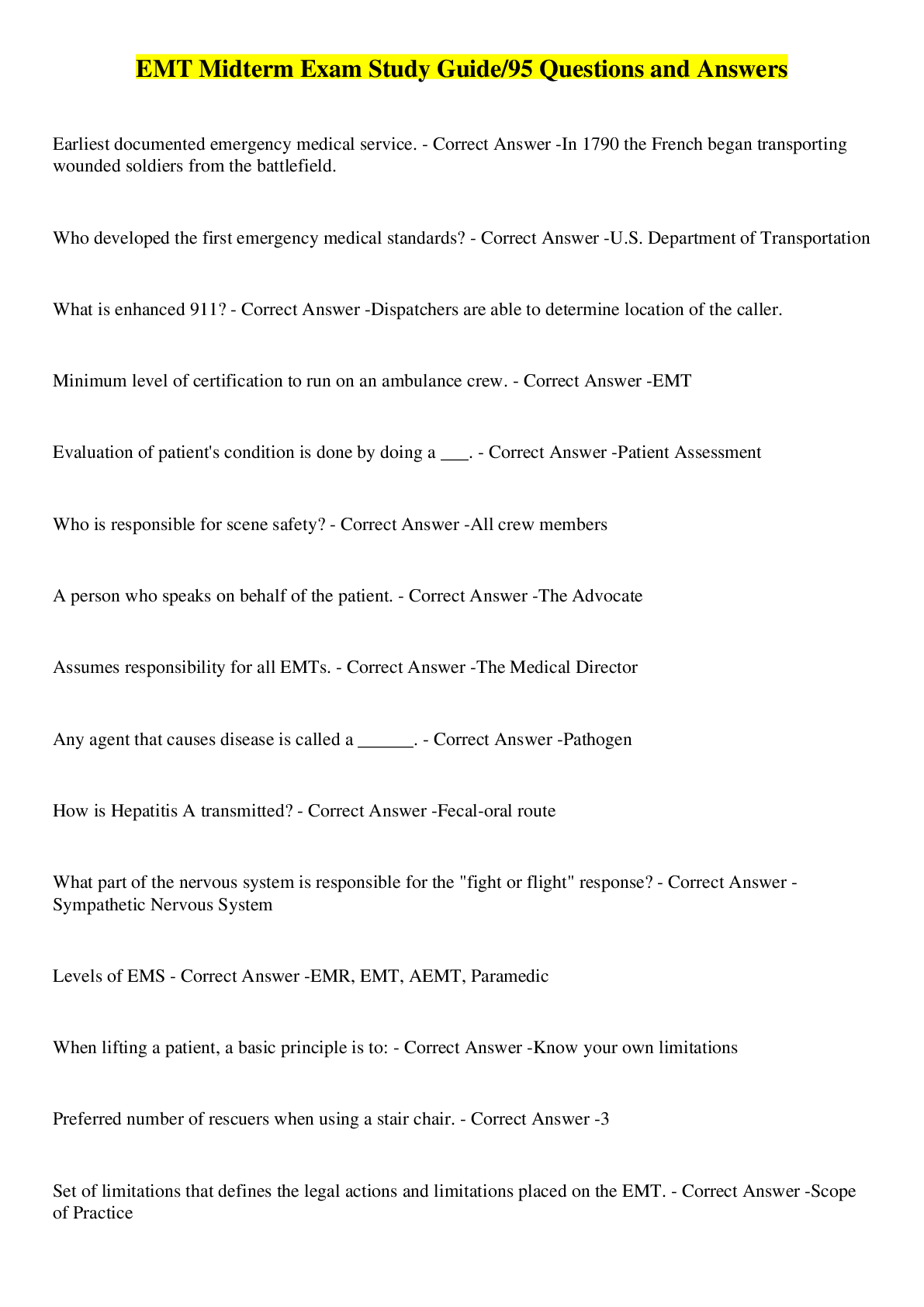*NURSING > EXAM > NUR 2790 / NUR2790 Professional Nursing III / PN3 Final Exam Study Guide Questions and Answers . Ras (All)
NUR 2790 / NUR2790 Professional Nursing III / PN3 Final Exam Study Guide Questions and Answers . Rasmussen College
Document Content and Description Below
NUR 2790 / NUR2790 Professional Nursing III / PN3 Final Exam Study Guide Questions and Answers with Rationale | Rated A Quiz Bank | Latest 2020 / 2021 |Rasmussen College 1 Musculoskeletal Trauma: N... ursing Management 1.A client tells the nurse that he has pain, swelling, fatigue, and numbness of his hands. The nurse should assess the client for which of the following occupations? 1. Retail store clerk 2. Lifeguard 3. Computer keyboard operator 4. Bus driver ANS: 3 Some occupations, sports, and tasks can create repetitive motion injuries or cumulative trauma. A computer keyboard operator is an occupation with a high incidence of overuse syndrome. 2.A client who plays baseball on the weekends is experiencing an arm injury. The nurse realizes this client needs to be evaluated for: 1. a rotator cuff tear. 2. lateral epicondylitis. 3. dislocation of the shoulder. 4. patellar tendinopathy. ANS: 1 A rotator cuff tear can be caused by extensive overhead movements found in sports and activities such baseball, softball, tennis, swimming, and volleyball. A dislocation of the shoulder is most commonly caused by a fall on an outstretched hand and arm. Lateral epicondylitis, or tennis elbow, is an overuse injury that involves the extensor/supinator muscles that attach to the distal humerus. Patellar tendinopathy, also known as jumpers knee, is seen in athletes who participate in activities that require a lot of jumping such as basketball. 3.A client, diagnosed with an ankle sprain, is prescribed ibuprofen to control pain and inflammation. What instruction should the client receive concerning this medication? 1. Bleeding is not a problem with this medication. 2. Take on an empty stomach to maximize its effect. 3. Take with food to minimize gastrointestinal irritation. 4. Wear sunscreen if outside to prevent a burn. ANS: 3 Ibuprofen is a nonsteroidal anti-inflammatory drug (NSAID). NSAIDs should be taken with food to minimize gastrointestinal irritation. Ibuprofen does not increase photosensitivity; however, bleeding can be a problem when taking ibuprofen. 4.A client, experiencing a fractured arm, asks the nurse why the splint is being applied. Which of the following should the nurse respond to this client? 1. It reduces the need for a cast. 2. It reduces bleeding, swelling and pain. 3. It prevents the need for surgery. 4. It immobilizes the muscles and joints. ANS: 2 Splinting of a fractured extremity minimizes bleeding, edema, and pain. Splinting does not reduce the need for a cast nor prevent the need for surgery. A cast immobilizes the muscles and joints. 5.A client has had a cast applied to immobilize a right ulnar fracture. Which of the following nursing interventions is most important? 1. Calling physical therapy for a sling 2. Checking capillary refill time 3. Giving pain medication 4. Starting discharge teaching ANS: 2 Checking the capillary refill time determines that circulation is not compromised. The other options can be completed after ensuring that circulation to the site is still adequate. 6.A client with a right arm cast is experiencing signs of a serious complication. Which of the following would cause the nurse the most concern? 1. Capillary refill time less than 3 seconds 2. Finger movement 3. Itching under the cast 4. Severe pain to the right arm continues after receiving pain medication ANS: 4 Severe pain that continues after receiving pain medication would be considered as being disproportionate to the injury, can be a sign of compartment syndrome, and should be immediately reported. The other options are expected assessment findings for a client with a cast. 7.A client is unable to pass the chair raise test. The nurse realizes this client is experiencing: 1. carpal tunnel syndrome. 2. rotator cuff tear. 3. fractured arm. 4. lateral epicondylitis. ANS: 4 The chair raise test examines the clients ability to grip and lift. The client stands behind a chair and places the hands on the chair back. The client then attempts to raise the chair. If pain is experienced over the lateral elbows, lateral epicondylitis may be present. The chair raise test is not used to diagnose carpal tunnel syndrome, rotator cuff tear, or a fractured arm. 8.A client has been wearing a splint for carpal tunnel syndrome for 7 weeks. The nurse realizes that which of the following would be the next course of treatment for this client? [Show More]
Last updated: 1 month ago
Preview 1 out of 76 pages
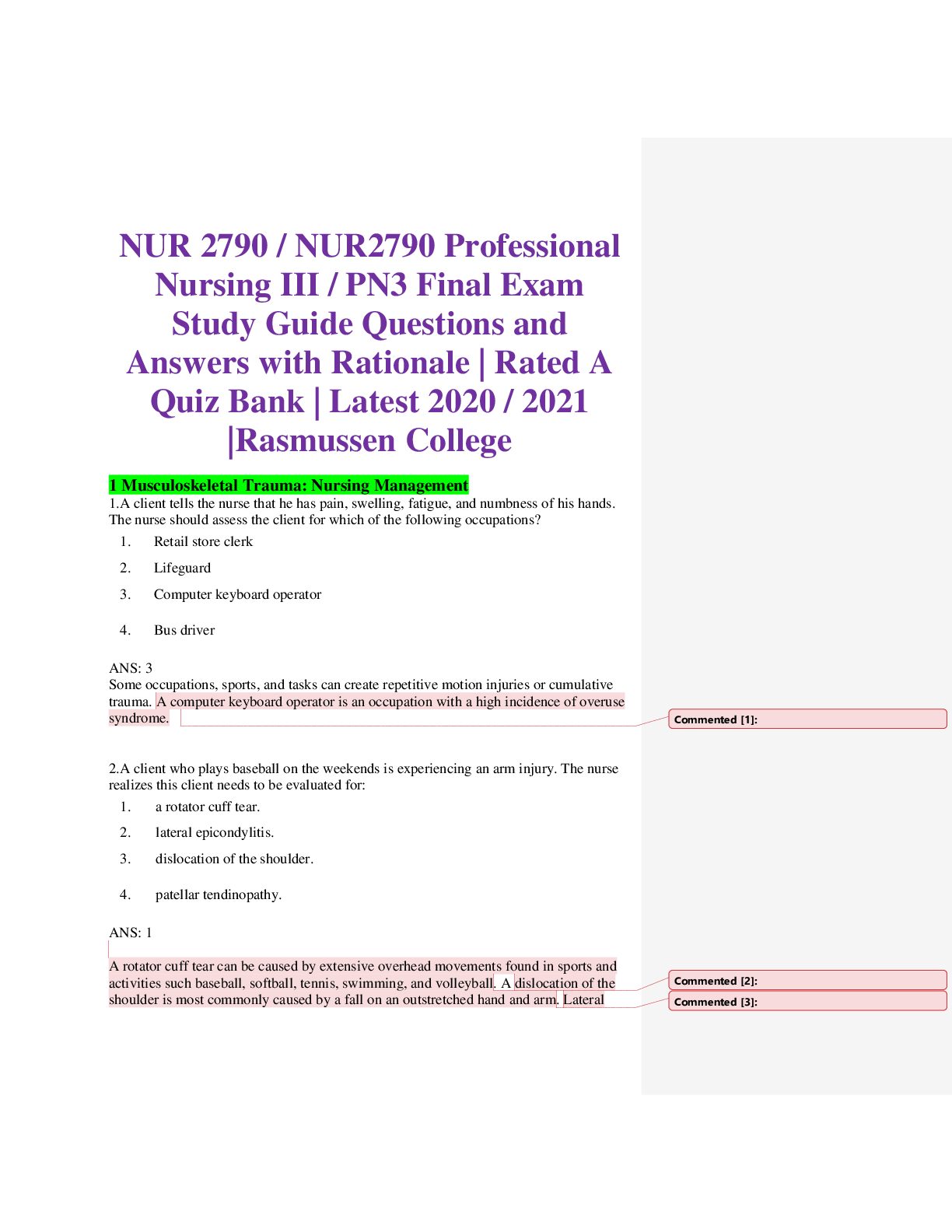
Reviews( 0 )
Document information
Connected school, study & course
About the document
Uploaded On
Dec 10, 2020
Number of pages
76
Written in
Additional information
This document has been written for:
Uploaded
Dec 10, 2020
Downloads
4
Views
198

